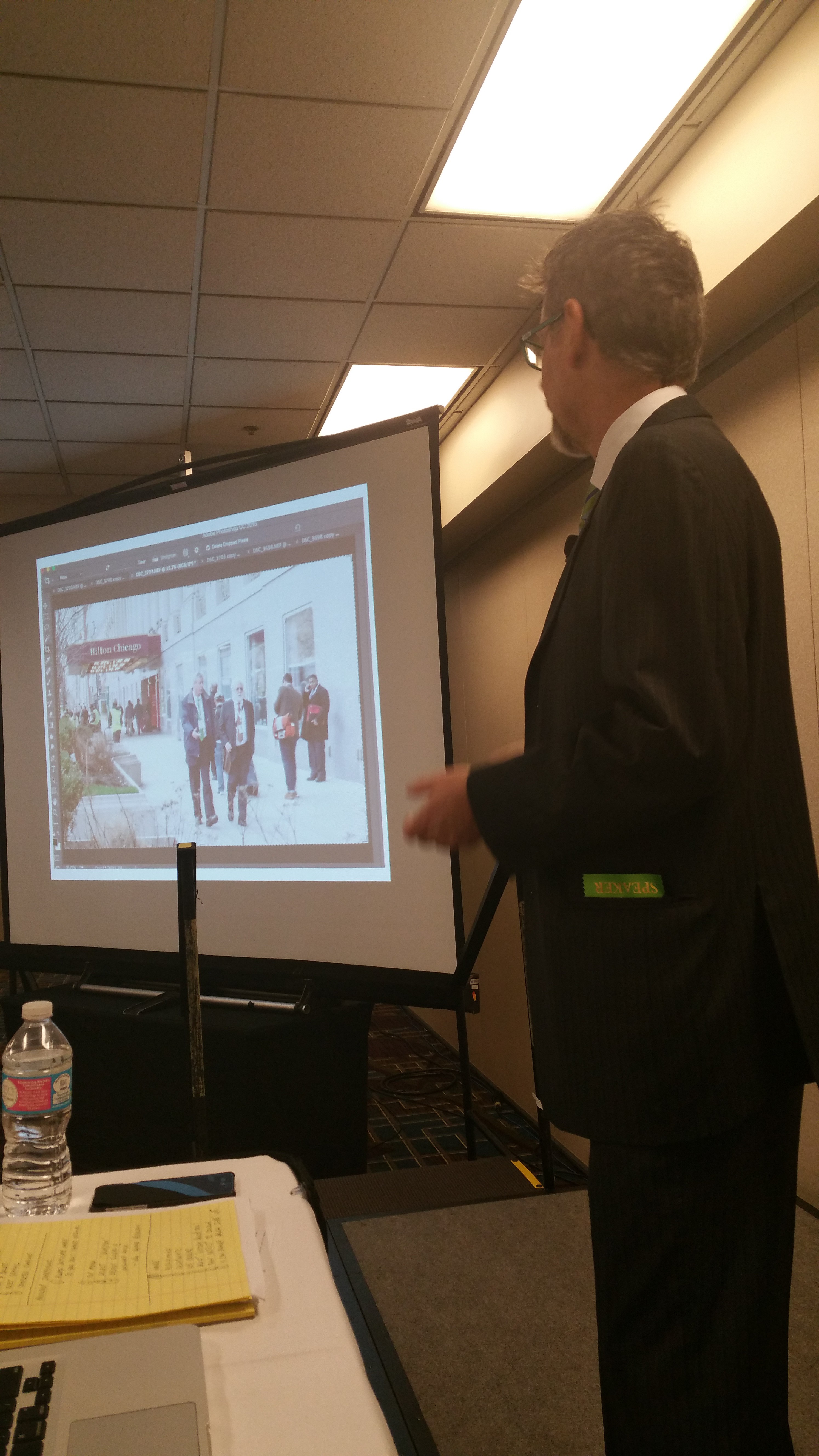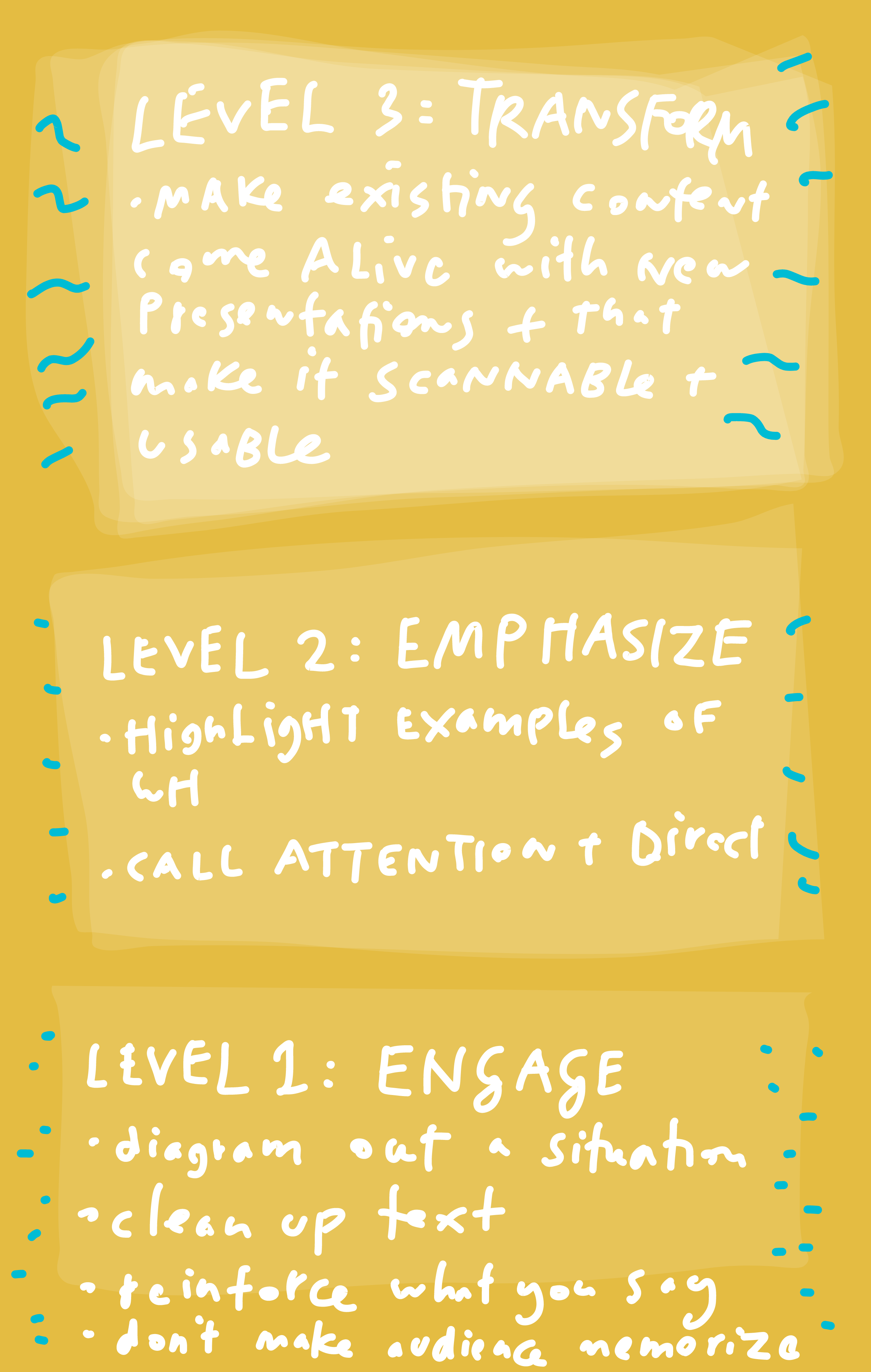Last week I presented at two different panels last week I presented at 2 different panels at the ABA TechShow in Chicago. It was a great chance to meet more lawyers and thought leaders around the future of the legal profession in the US.
The first panel I presented that was called Graphic design 101 for litigators. I presented with Canadian lawyer Phil Brown about tools, method, and principles that lawyers can use to improve their communication skills, and their engagement with their target audiences — whether they be juries, clients, judges, or fellow professionals.
Phil dove into key ways to use Photoshop to make visuals that would pop and be remembered at trial. This included making photographs entirely black and white, except for what you wanted the audience to focus on — and leaving that focal point in the original color. Another technique he spotlighted was using Photoshop filters to sharpen an image — revealing details that exist in the image, but are not necessarily crystal clear.
My presentation took a few steps back, to talk about the fundamentals of how lawyers can use visual design (and relationships with professional designers) to improve their ability to communicate, and to engage and resonate with their audiences.
I structured my talk around the core processes and principles a lawyer can use to get their point across visually. I aimed to give a primer in graphic design, talking about fonts, colors, images, and composition. The goal was to show how these basic elements can be arranged to direct the audience’s focus, shape their understanding, and fit their mental models. It was also to help the lawyers better communicate with professional designers they might hire, to make the most of these relationships.
I also gave the cardinal do’s and don’ts, based on the mistakes that I see when lawyers and law students first venture into visual design. Some of these core messages are to avoid the temptation of overcrowding images, and instead embracing the power of white space. The other is to have a clear hierarchy of all the elements that you’re putting onto a canvas. That means limiting the number of colors, the number of fonts, and the number of graphics so that there is a very clear way for the user to focus and know what to take away from any image.
These lessons and others are all memorialized over on my Legal Design Toolbox site.
The second presentation I made was on another stream of my design work: the future of access to justice and legal technology. This was a more interactive panel, with lots of questions from the audience and moderators about what is legal, what is possible, and what the future holds for how technology will affect how lay people will access legal services.
The panel started off with that core access to justice problem: why are so many people in this country not able to effectively use the legal system to solve their problems? And why aren’t more people using lawyers to figure out to navigate this system? 
Most of the people in the audience were not technophobes, and were in favor of changing the regulations on what counts as a licensed practice of law. But the focus was still on the majority of lawyers outside of the room, and outside of the TechShow conference bubble, who are suspicious of new legal technology ventures and tools that aim to provide more DIY or automated legal services to people.
Many panelists and audience members reported back how nervous and upset their colleagues are in the private bars around the country about this new era of technology coming into the law, and how resistant (and potentially litigious) they are in response.
The question then is how to either work with this segment of lawyers, to show them how they could be harnessing these technologies to enhance their service-offerings and to build stronger business models. Or it might be, as some audience members more bluntly put it, waiting for a generational shift that will lead to a younger crowd of lawyers who are more accepting and empowered when it comes to new technologies.
That’s where the panel left it — the hope rests in the rising wave of lawyers who will be able to understand how to use the power of the internet, unbundled services, artificial intelligence, machine learning, and coordinated services (law tied into other services) to provide higher quality service to their clients and build more reslient businesses for themselves.






